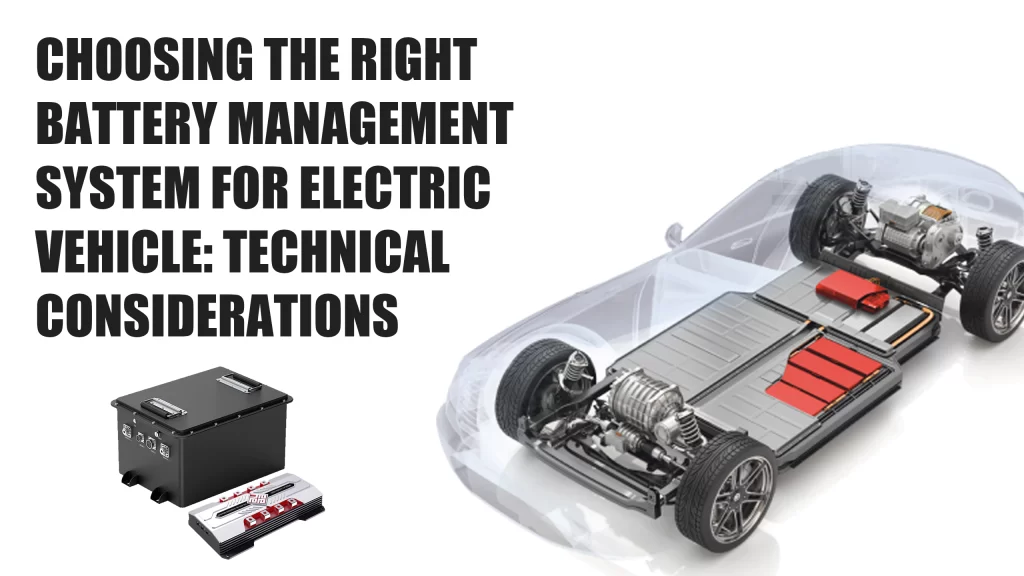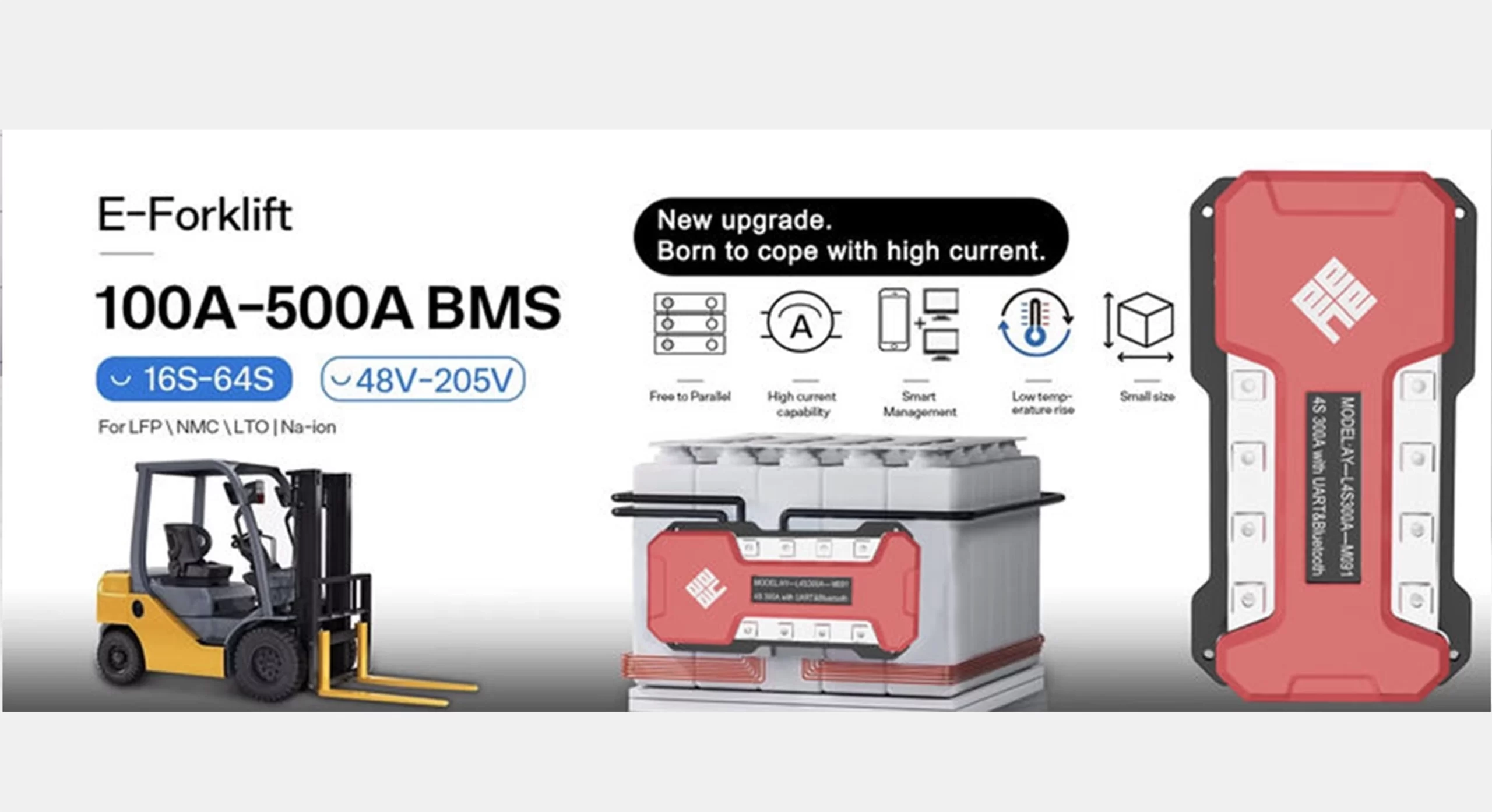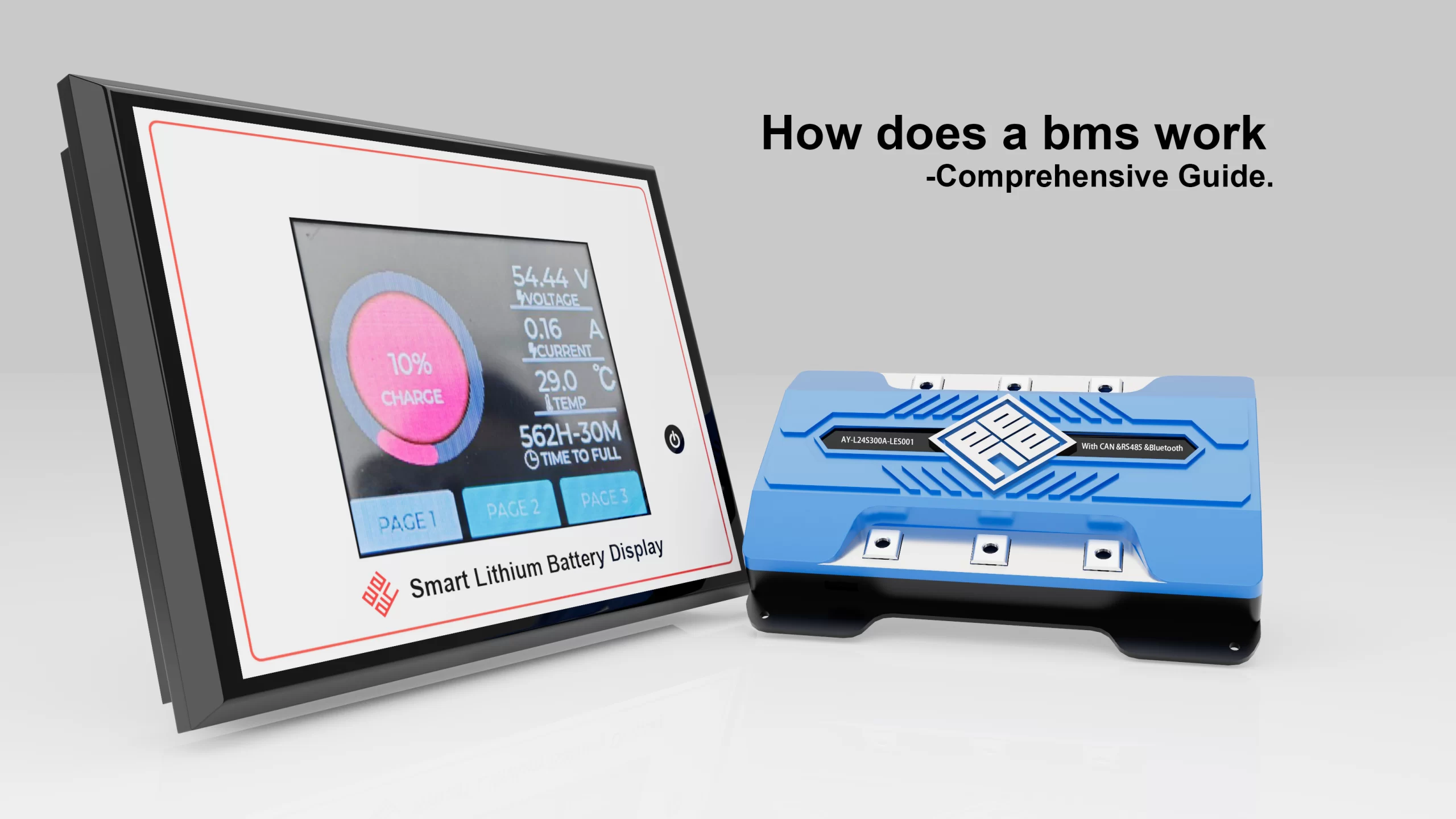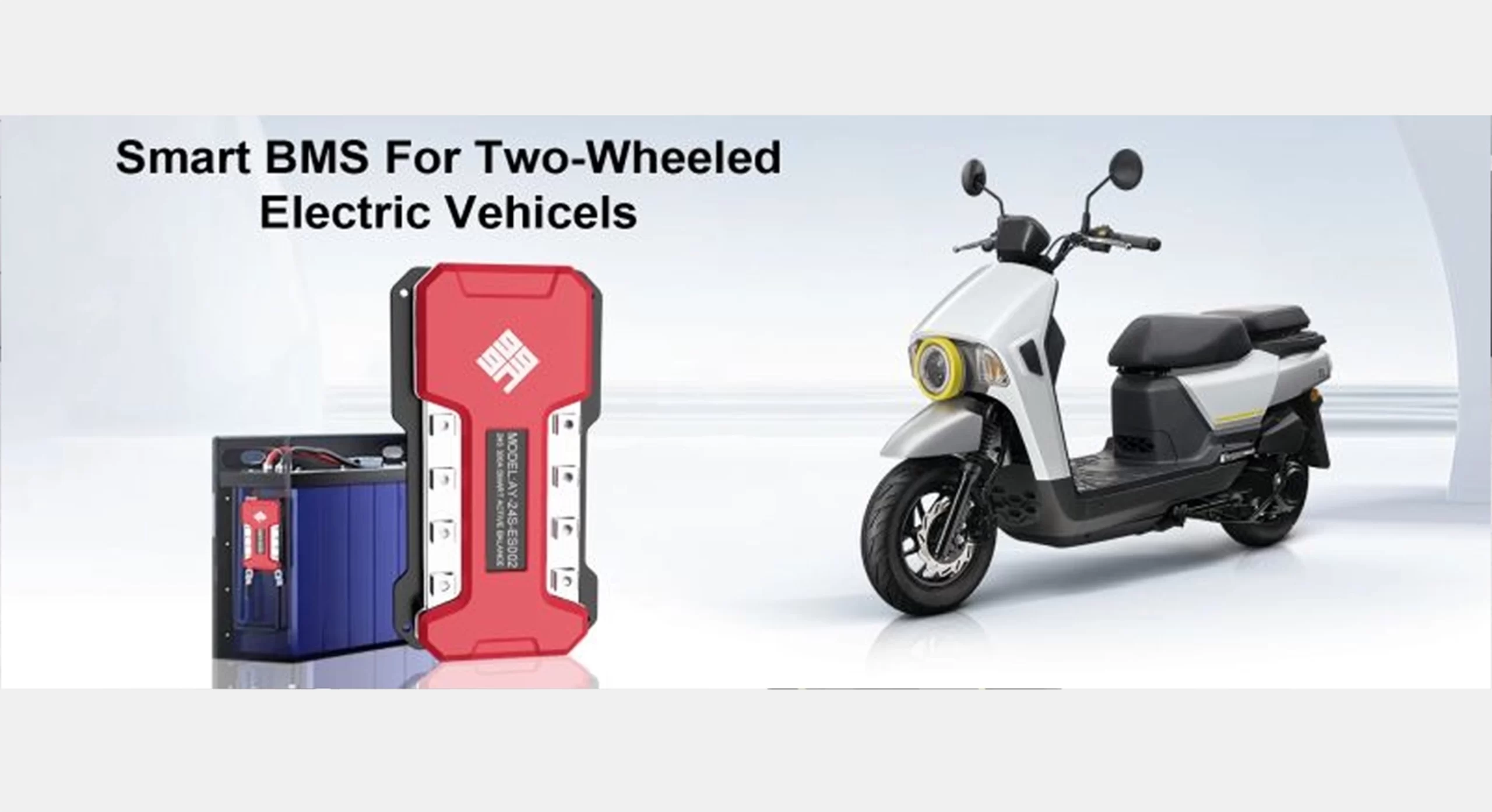Home About Us EVENTS & NEWS Choosing the Right Battery Management System for Electric Vehicle: Technical Considerations
Choosing the Right Battery Management System for Electric Vehicle: Technical Considerations
Choosing the Right Battery Management System for Electric Vehicle: Technical Considerations
As electric vehicles (EVs) rapidly transform transportation worldwide, the role of a battery management system for electric vehicle becomes increasingly critical.
In order to maximize battery longevity and performance and safeguard the entire vehicle from malfunctions.
A Battery Management System (BMS) makes sure lithium-ion batteries run safely, effectively, and dependably.
We’ll cover key components, system structure, working principles, advanced functionalities.
And the technical considerations involved in selecting the right battery management system for electric vehicle applications.

Definition and function of battery management systems for electric vehicle
A battery management system for electric vehicle is an embedded system responsible for monitoring, protecting, balancing, and controlling the operation of a lithium-ion battery pack in an EV.
It functions as both the “brain” and the “guardian” of the battery.
Core Functions of a Battery Management System:
Monitoring cell voltage, pack voltage, current, and temperature.
Estimating SOC (State of Charge) and SOH (State of Health)
Performing cell balancing to avoid overcharging or undercharging
Enabling communication with the vehicle’s controller and user interface
Providing protection from overcharge, over-discharge, overheating, and short circuits
Without a robust battery management system for electric vehicle, lithium-ion batteries are prone to accelerated aging, efficiency loss, or even thermal runaway.
Structure and Architecture of battery management system for electric vehicle
A high-quality battery management system for electric vehicle consists of tightly integrated hardware and software components.
1. Hardware Architecture
Master Control Unit (MCU): The central processor running control algorithms
Slave Units or Modules: Distributed boards monitoring individual cells
Voltage and Temperature Sensors: For real-time cell-level measurements
Current Sensor (Shunt or Hall-based): Tracks total current draw
Relay/Contactor Control Circuitry: Engages/disengages power path as needed
2. Communication Interfaces
CANBUS: Enables communication with vehicle ECUs
SMBUS/RS485: Often used for diagnostics, chargers, or apps
Bluetooth: For remote configuration or mobile apps
Together, these modules make up a flexible and scalable battery management system for electric vehicle applications.
Working Principles: How a BMS Operates
A modern battery management system for electric vehicle performs several critical tasks in real time:
1. Voltage & Current Monitoring
To make sure no cell is overloaded or profoundly discharged, the voltage of each cell is continuously monitored.
2. Thermal Management
The pack is shielded from overheating by temperature sensors.
Active cooling systems can be integrated with certain BMS models.
3. Cell Balancing
Cell imbalance results in a decline in performance. BMS performs:
Passive balancing: Dissipates energy as heat
Active balancing: Redistributes charge from higher to lower cells
4. SOC/SOH Estimation
For accurate range and lifetime control, sophisticated algorithms calculate the battery’s charge level (SOC) and health state (SOH).
5. Protection Logic
The BMS will disconnect the load or charger when preset thresholds are exceeded for:
Overcharge
Over-discharge
Overcurrent
Overtemperature
Short circuit
Application Scenarios for battery management system for electric vehicle
A battery management system for electric vehicle is used across a wide range of transportation formats:
1. Passenger Electric Cars
Fast charging, range estimation, and energy density all demand a high-voltage BMS.
Systems must adhere to strict automobile regulations.
2. Electric Motorcycles and Scooters
Compact and lightweight BMS needed, like Ayaa’s AY-L10S200A-ES002 with Bluetooth, CANBUS, and passive balancing.
3. Forklifts and Logistics EVs
High-current BMS such as AY-L24S300A-ES001 designed for 7S–24S configurations and 300A load management.
4. Off-Road and Utility Vehicles
Demand robust BMS designs that are resistant to dust, vibrations, and extreme temperatures.
Key Features to Look For in an EV BMS
When evaluating a battery management system for electric vehicle, consider:
Accuracy of measurement (voltage ±5mV, temp ±1°C)
Modular design for large battery packs (48V–800V systems)
Cloud connectivity for remote diagnostics and OTA updates
Customizable thresholds and firmware logic
Certifications such as ISO 26262, UN38.3, CE, RoHS
Additionally, predictive maintenance is made possible by smart BMS integration, which raises EV fleets’ Total Cost of Ownership (TCO).
Maintenance and Best Practices
Proper maintenance ensures your BMS for electric vehicle functions reliably over its lifespan.
Tips:
Every six months, check the health of the sensor and the connector
Update the firmware to preserve algorithm performance.
Record and examine past data to identify failures early.
Maintain the BMS within the environmental ratings that have been defined.
Advanced features of battery management systems for electric vehicle
1. Distributed BMS Architectures
This structure provides improved heat management, adaptability, and scalability, making it perfect for big EV platforms.
2. Cloud-Based Monitoring
Cloud-based solutions can receive BMS data for fleet management, alarms, and remote tracking.
3. AI Integration
Early indicators of cell aging or imbalance are detected by machine learning, which also improves SOC/SOH prediction.
FAQ
Q:What is BMS in an electric vehicle?
A:An assembly of battery cells electrically arranged in a row x column matrix configuration to enable the delivery of a targeted range of voltage and current for a duration of time against expected load scenarios is called a battery management system (BMS).
Q:Is BMS necessary for a lithium-ion battery?
A:It is an essential part of modern battery technology, particularly when it comes to lithium-ion battery applications.
Monitoring the temperature, voltage, state of health (SOH), and state of charge (SOC) of every cell in a battery pack is one of the many responsibilities of the BMS.
Q:Does BMS prevent overcharging?
A:The charger cannot stop single cells in a pack from being overcharged since it is unable to track the voltages or temperatures of individual cells.
To reduce the risk of damage or fire, the BMS makes sure that charging either stops or is modified if any cell exceeds dangerous voltage or temperature levels.
Advantages of choosing Shenzhen Aiya Technology Co.
For over 18 years, Shenzhen Ayaa Technology Co., Ltd. has specialized in developing custom and standard BMS for electric vehicle solutions.
Our global clientele includes robotics firms, storage integrators, logistics fleets, and EV OEMs.
Key Strengths:
400+ BMS Models: Covering 1S to 35S, 1A to 320A
Advanced Communication Support: CANBUS, SMBUS, RS485, Bluetooth
Market Coverage: US, Japan, Germany, India, Europe
Certifications: UN38.3, MSDS, CE, RoHS
Featured EV BMS Products:
AY-L24S300A-ES001: For forklifts and high-current EVs
AY-L10S200A-ES002: For scooters, light EVs, and mobile platforms
AY-L16S200A-ES003: For modular storage or utility vehicles
Additionally, we provide complete customization services, such as localized firmware for global compliance, remote app integration, and communication protocol development.
Choosing the right BMS for electric vehicle involves balancing electrical specifications, environmental resilience, communication needs, and intelligent functionality.
In addition to safeguarding your battery investment, a strong and dependable BMS improves the functionality and user experience of your EV.
With proven expertise, broad product lines, and customizable smart BMS technology, Shenzhen Ayaa Technology Co., Ltd. is your ideal partner in the EV era.
Power your electric future with intelligence—choose Ayaa.













